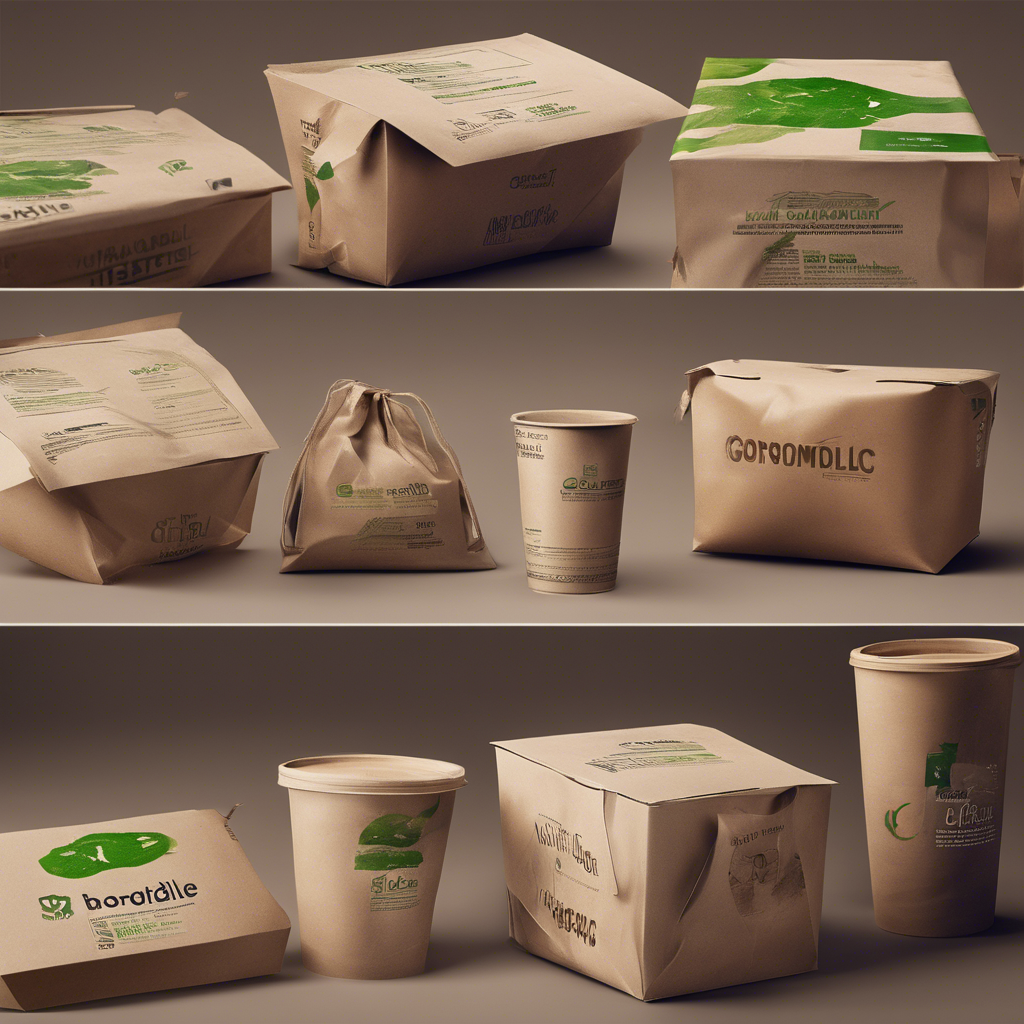The Key Differences Between Biodegradable and Compostable Packaging
- zenpacks
- Jul 17, 2024
- 3 min read
Updated: Jul 19, 2024
In today's fast-paced world, environmental awareness is at the forefront of many discussions. One of the ways this consciousness manifests is through sustainable packaging options. There is often confusion surrounding the terms "biodegradable" and "compostable" packaging. While both sound environmentally friendly, they carry distinct characteristics and implications. Let's delve into the nuances that differentiate biodegradable from compostable packaging to help you make more informed and eco-conscious choices.
1. Biodegradable Packaging
Biodegradable packaging refers to materials that break down naturally into simpler compounds over time. These materials decompose through biological processes, such as the actions of microorganisms, into elements like water, carbon dioxide, and biomass. It is crucial to note that the term "biodegradable" does not specify the timeline required for the breakdown process to occur fully.
Characteristics of Biodegradable Packaging:
Can be made from various sources, including plant-based materials and polymers.
Breaks down into smaller components under specific environmental conditions.
May leave behind some residue or fragments during decomposition.

2. Compostable Packaging
Compostable packaging, on the other hand, is designed to break down entirely and turn into nutrient-rich compost that can enrich soil. Unlike biodegradable materials, compostable items undergo a specific decomposition process within a defined timeframe under controlled conditions. These conditions typically involve the presence of heat, moisture, and microorganisms.
Characteristics of Compostable Packaging:
Breaks down into non-toxic components rapidly and entirely.
Provides nutrients to the soil during decomposition.
Requires specific composting facilities or conditions for optimal breakdown.
3. Key Differences at a Glance
Decomposition Process
Biodegradable Packaging: Breaks down into natural elements through the action of microorganisms. The process can take varying amounts of time depending on the material and environmental conditions, and may not always break down completely.
Compostable Packaging: Specifically designed to break down into non-toxic, nutrient-rich compost within a defined time frame under specific conditions (e.g., industrial composting facilities). It fully decomposes into organic matter that can enrich soil.
Environmental Conditions
Biodegradable Packaging: Can decompose in various environments, including landfills, oceans, and soil. However, some biodegradable materials may require industrial composting conditions to degrade efficiently.
Compostable Packaging: Requires specific conditions to compost properly, such as the right temperature, moisture, and microbial activity, usually found in industrial composting facilities. Home composting is not always sufficient for some compostable materials.
End Products
Biodegradable Packaging: May leave behind microplastics or residues if not fully broken down. The end products can vary, including potentially harmful substances if the material does not decompose completely.
Compostable Packaging: Converts entirely into compost, which is beneficial for soil health and does not leave harmful residues. The end product is a nutrient-rich material that enhances soil fertility.
4. Making Informed Choices
When selecting between biodegradable and compostable packaging, it is essential to consider your specific needs and the intended disposal method. If you require packaging that reduces environmental impact but lacks specific composting facilities, biodegradable options might be suitable. Conversely, if you aim to contribute directly to soil health and have access to composting facilities, compostable packaging could align better with your sustainability goals.
5. Final Thoughts
Understanding the disparities between biodegradable and compostable packaging empowers consumers and businesses to make environmentally conscious decisions. By opting for packaging solutions that align with your values and disposal capabilities, you can play a part in reducing waste and promoting sustainability.
Whether you choose biodegradable or compostable packaging, both options represent positive strides towards a greener future. Let's continue to prioritize sustainability in packaging choices to create a more environmentally friendly world for generations to come.
Next time you reach for packaging, remember the difference between biodegradable and compostable options – it's a small choice that can make a significant impact on our planet's well-being.

Comments